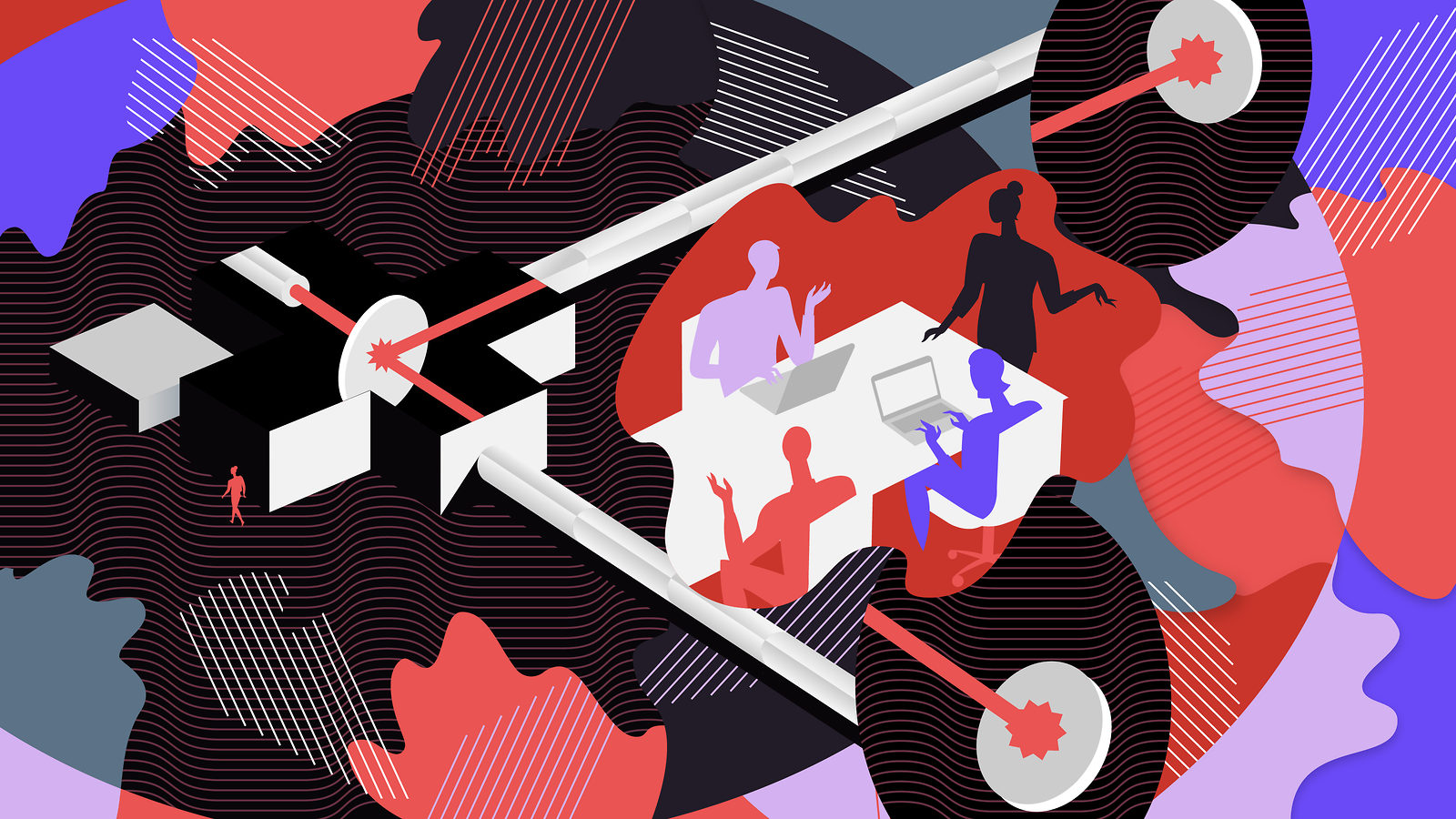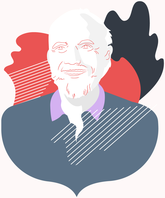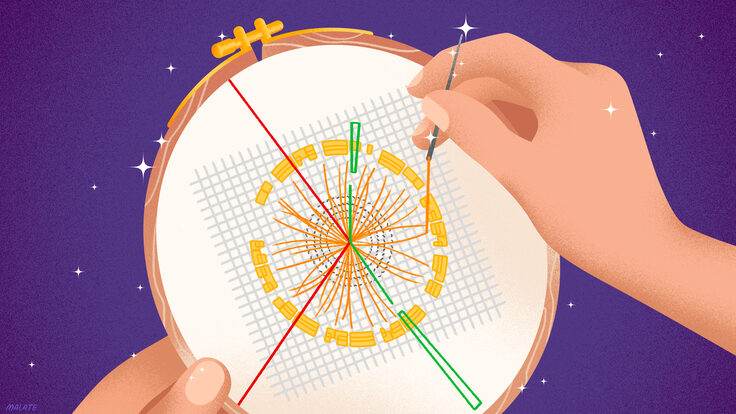These days the LIGO experiment seems almost unstoppable. In September 2015, LIGO detected gravitational waves directly for the first time in history. Afterward, they spotted them three times more, definitively blowing open the doors on the new field of gravitational-wave astronomy.
On October 3, the Nobel Committee awarded their 2017 prize in physics to some of the main engines behind the experiment. Just two weeks after that, LIGO scientists revealed that they'd seen, for the first time, gravitational waves from the collision of neutron stars, an event confirmed by optical telescopes—yet another first.
These recent achievements weren’t inevitable. It took LIGO scientists decades to get to this point.
LIGO leader Barry Barish, one of the three recipients of the 2017 Nobel, recently sat down with Symmetry writer Leah Hesla to give a behind-the-scenes look at his 22 years on the experiment.
What has been your role at LIGO?
I started in 1994 and came on board at a time when we didn’t have the money. I had to get the money and have a strategy that [the National Science Foundation] would buy into, and I had to have a plan that they would keep supporting for 22 years. My main mission was to build this instrument—which we didn’t know how to make—well enough to do what it did.
So we had to build enough trust and success without discovering gravitational waves so that NSF would keep supporting us. And we had to have the flexibility to evolve LIGO’s design, without costing an arm and a leg, to make the improvements that would eventually make it sensitive enough to succeed.
We started running in about 2000 and took data and improved the experiment over 10 years. But we just weren’t sensitive enough. We managed to get a major improvement program to what’s called Advanced LIGO from the National Science Foundation. After a year and a half or so of making it work, we turned on the device in September of 2015 and, within days, we’d made the detection.
What steps did LIGO take to be as sensitive as possible?
We were limited very much by the shaking of the Earth—at the low frequencies, the Earth just shakes too much. We also couldn’t get rid of the background noise at high frequencies—we can’t sample fast enough.
In the initial LIGO, we reduced the shaking by something like 100 million. We had the fanciest set of shock absorbers possible. The shock absorbers in your car take a bump that you go over, which is high-frequency, and transfer it softly to low-frequency. You get just a little up and down; you don’t feel very much when you go over a bump. You can’t get rid of the bump—that’s energy—but you can transfer it out of the frequencies where it bothers you.
So we do the same thing. We have a set of springs that are fancier but are basically like shock absorbers in your car. That gave us a factor of 100 million reduction in the shaking of the Earth.
But that wasn’t good enough [for initial LIGO].
What did you do to increase sensitivity for Advanced LIGO?
After 15 years of not being able to detect gravitational waves, we implemented what we call active seismic isolation, in addition to passive springs. It’s very much equivalent to what happens when you get on an airplane and you put those [noise cancellation] earphones on. All of a sudden the airplane is less noisy. That works by detecting the ambient noise—not the noise by the attendant dropping a glass or something. That’s a sharp noise, and you’d still hear that, or somebody talking to you, which is a loud independent noise. But the ambient noise of the motors and the shaking of the airplane itself are more or less the same now as they were a second ago, so if you measure the frequency of the ambient noise, you can cancel it.
In Advanced LIGO, we do the same thing. We measure the shaking of the Earth, and then we cancel it with active sensors. The only difference is that our problem is much harder. We have to do this directionally. The Earth shakes in a particular direction—it might be up and down, it might be sideways or at an angle. It took us years to develop this active seismic isolation.
The idea was there 15 years ago, but we had to do a lot of work to develop very, very sensitive active seismic isolation. The technology didn’t exist—we developed all that technology. It reduced the shaking of the Earth by another factor of 100 [over LIGO’s initial 100 million], so we reduced it by a factor of 10 billion.
So we could see a factor of 100 further out in the universe than we could have otherwise. And each factor of 10 gets cubed because we’re looking at stars and galaxies [in three dimensions]. So when we improved [initial LIGO’s sensitivity] by a factor of 100 beyond this already phenomenal number of 100 million, it improved our sensitivity immediately, and our rate of seeing these kinds of events, by a factor of a hundred cubed—by a million.
That’s why, after a few days of running, we saw something. We couldn’t have seen this in all the years that we ran at lower sensitivity.
What key steps did you take when you came on board in 1994?
First we had to build a kind of technical group that had the experience and abilities to take on a $100 million project. So I hired a lot of people. It was a good time to do that because it was soon after the closure of the Superconducting Super Collider in Texas. I knew some of the most talented people who were involved in that, so I brought them into LIGO, including the person who would be the project manager.
Second, I made sure the infrastructure was scaled to a stage where we were doing it not the cheapest we could, but rather the most flexible.
The third thing was to convince NSF that doing this construction project wasn’t the end of what we had to do in terms of development. So we put together a vigorous R&D program, which NSF supported, to develop the technology that would follow similar ones that we used.
And then there were some technical changes—to become as forward-looking as possible in terms of what we might need later.
What were the technical changes?
The first was to change from what was the most popularly used laser in the 1990s, which was a gas laser, to a solid-state laser, which was new at that time. The solid-state laser had the difficulty that the light was no longer in the visible range. It was in the infrared, and people weren’t used to interferometers like that. They like to have light bouncing around that they can see, but you can’t see the solid-state laser light with your naked eye. That’s like particle physics. You can’t see the particles in the accelerator either. We use sensors to do that. So we made that kind of change, going from analog controls to digital controls, which are computer-based.
We also inherited the kind of control programs that had been developed for accelerators and used at the Superconducting Super Collider, and we brought the SSC controls people into LIGO. These changes didn’t pay off immediately, but paved the road toward making a device that could be modern and not outdated as we moved through the 20 years. It wasn’t so much fixing things as making LIGO much more forward-looking—to make it more and more sensitive, which is the key thing for us.
Did you draw on past experience?
I think my history in particle physics was crucial in many ways, for example, in technical ways—things like digital controls, how we monitored beam. We don’t use the same technology, but the idea that you don’t have to see it physically to monitor it—those kinds of things carried over.
The organization, how we have scientific collaborations, was again something that I created here at LIGO, which was modeled after high-energy physics collaborations. Some of it has to be modified for this different kind of project—this is not an accelerator—but it has a lot of similarities because of the way you approach a large scientific project.
Were you concerned the experiment wouldn’t happen? If not, what did concern you?
As long as we kept making technical progress, I didn’t have that concern. My only real concern was nature. Would we be fortunate enough to see gravitational waves at the sensitivities we could get to? It wasn’t predicted totally. There were optimistic predictions—that we could have detected things earlier — but there are also predictions we haven't gotten to. So my main concern was nature.
When did you hear about the first detection of gravitational waves?
If you see gravitational waves from some spectacular thing, you’d also like to be able to see something in telescopes and electromagnetic astronomy that’s correlated. So because of that, LIGO has an early alarm system that alerts you that there might be a gravitational wave event. We more or less have the ability to see spectacular things early. But if you want people to turn their telescopes or other devices to point at something in the sky, you have to tell them something in time scales of minutes or hours, not weeks or months.
The day we saw this, which we saw early in its running, it happened at 4:50 in the morning in Louisiana, 2:50 in the morning in California, so I found out about it at breakfast time for me, which was about four hours later. When we alert the astronomers, we alert key people from LIGO as well. We get things like that all the time, but this looked a little more serious than others. After a few more hours that day, it became clear that this was nothing like anything we’d seen before, and in fact looked a lot like what we were looking for, and so I would say some people became convinced within hours.
I wasn’t, but that’s my own conservatism: What’s either fooling us or how are we fooling ourselves? There were two main issues. One is the possibility that maybe somebody was inserting a rogue event in our data, some malicious way to try to fool us. We had to make sure we could trace the history of the events from the apparatus itself and make sure there was no possibility that somebody could do this. That took about a month of work. The second was that LIGO was a brand new, upgraded version, so I wasn’t sure that there weren’t new ways to generate things that would fool us. Although we had a lot of experience over a lot of years, it wasn’t really with this version of LIGO. This version was only a few days old. So it took us another month or so to convince us that it was real. It was obvious that there was going to be a classic discovery if it held up.
What does it feel like to win the Nobel Prize?
It happened at 3 in the morning here [in California]. [The night before], I had a nice dinner with my wife, and we went to bed early. I set the alarm for 2:40. They were supposed to announce the result at 2:45. I don’t know why I set it for 2:40, but I did. I moved the house phone into our bedroom.
The alarm did go off at 2:40. There was no call, obviously—I hadn’t been awakened, so I assumed, kind of in my groggy state, that we must have been passed over. I started going to my laptop to see who was going to get it. Then my cell phone started ringing. My wife heard it. My cell phone number is not given out, generally. There are tens of people who have it, but how [the Nobel Foundation] got it, I’m not sure. Some colleague, I suppose. It was a surprise to me that it came on the cell phone.
The president of the Nobel Foundation told me who he was, said he had good news and told me I won. And then we chatted for a few minutes, and he asked me how I felt. And I spontaneously said that I felt “thrilled and humbled at the same time.” There’s no word for that, exactly, but that mixture of feeling is what I had and still have.
Do you have advice for others organizing big science projects?
We have an opportunity. As I grew into this and as science grew big, we always had to push and push and push on technology, and we’ve certainly done that on LIGO. We do that in particle physics, we do that in accelerators.
I think the table has turned somewhat and that the technology has grown so fast in the recent decades that there’s incredible opportunities to do new science. The development of new technologies gives us so much ability to ask difficult scientific questions. We’re in an era that I think is going to propagate fantastically into the future.
Just in the new millennium, maybe the three most important discoveries in physics have all been done with, I would say, high-tech, modern, large-scale devices: the neutrino experiments at SNO and Kamiokande doing the neutrino oscillations, which won a Nobel Prize in 2013; the Higgs boson—no device is more complicated or bigger or more technically advanced than the CERN LHC experiments; and then ours, which is not quite the scale of the LHC, but it’s the same scale as these experiments—the billion dollar scale—and it’s very high-tech.
Einstein thought that gravitational waves could never be detected, but he didn’t know about lasers, digital controls and active seismic isolation and all things that we developed, all the high-tech things that are coming from industry and our pushing them a little bit harder.
The fact is, technology is changing so fast. Most of us can’t live without GPS, and 10 or 15 years ago, we didn’t have GPS. GPS exists because of general relativity, which is what I do. The inner silicon microstrip detectors in the CERN experiment were developed originally for particle physics. They developed rapidly. But now, they’re way behind what’s being done in industry in the same area. Our challenge is to learn how to grab what is being developed, because technology is becoming great.
I think we need to become really aware and understand the developments of technology and how to apply those to the most basic physics questions that we have and do it in a forward-looking way.
What are your hopes for the future of LIGO?
It’s fantastic. For LIGO itself, we’re not limited by anything in nature. We’re limited by ourselves in terms of improving it over the next 15 years, just like we improved in going from initial LIGO to Advanced LIGO. We’re not at the limit.
So we can look forward to certainly a factor of 2 to 3 improvement, which we’ve already been funded for and are ready for, and that will happen over the next few years. And that factor of 2 or 3 gets cubed in our case.
This represents a completely new way to look at the universe. Everything we look at was with electromagnetic radiation, and a little bit with neutrinos, until we came along. We know that only a few percent of what’s out there is luminous, and so we are opening a new age of astronomy, really. At the same time, we’re able to test Einstein’s theories of general relativity in its most important way, which is by looking where the fields are the strongest, around black holes.
That’s the opportunity that exists over a long time scale with gravitational waves. The fact that they’re a totally different way of looking at the sky means that in the long term it will develop into an important part of how we understand our universe and where we came from. Gravitational waves are the best way possible, in theory—we can’t do it now—of going back to the very beginning, the Big Bang, because they weren’t absorbed. What we know now comes from photons, but they can go back to only 300,000 years from the Big Bang because they’re absorbed.
We can go back to the beginning. We don’t know how to do it yet, but that is the potential.








